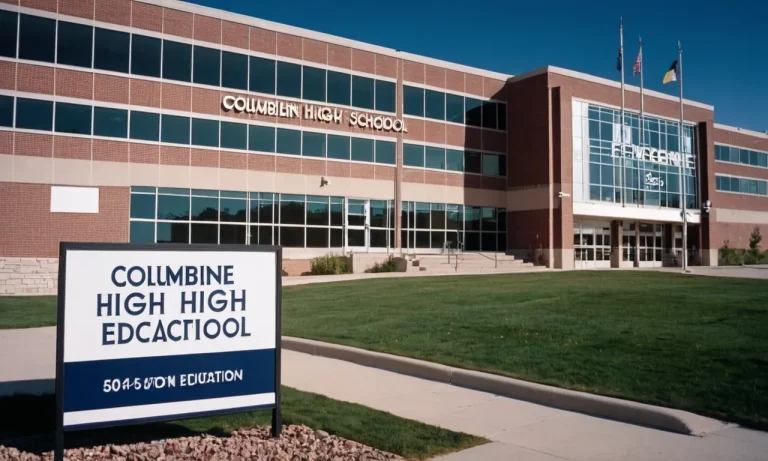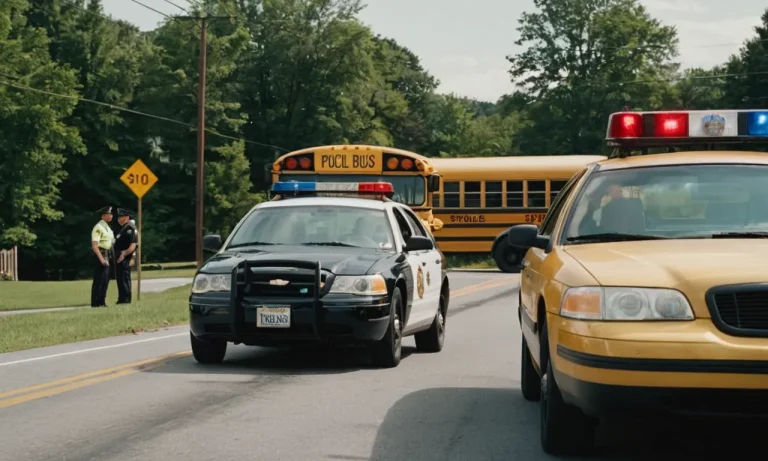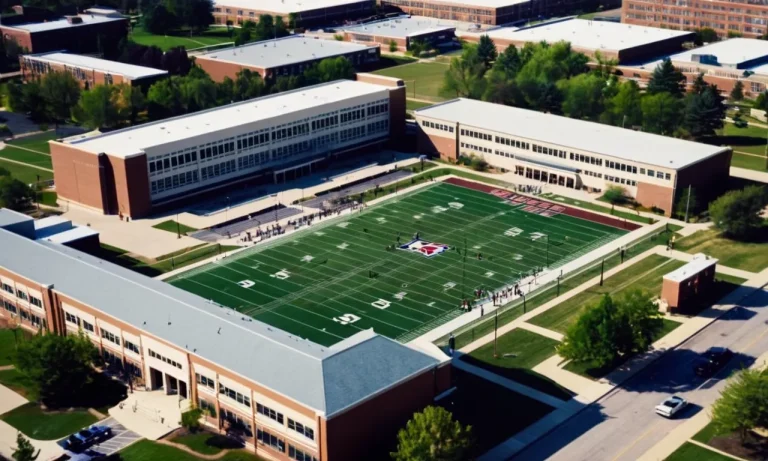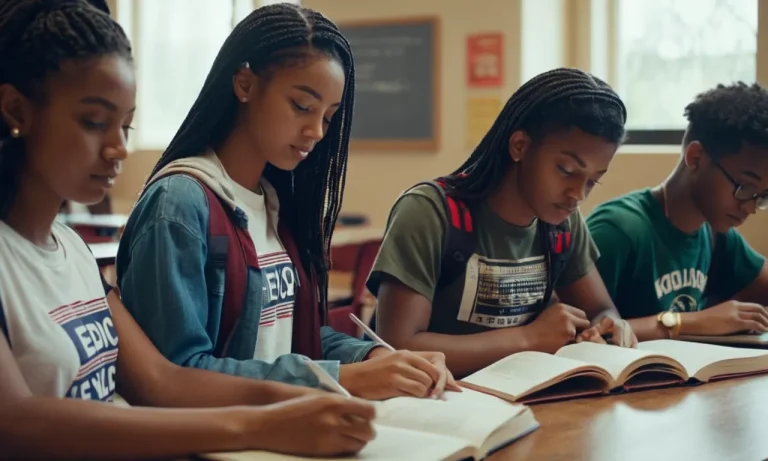In an era where the education system is constantly scrutinized, the question ‘why is school so useless?’ has become a recurring theme among students, parents, and educators alike.
If you’re short on time, here’s a quick answer to your question: Schools often fail to equip students with practical life skills, foster critical thinking, and adapt to the rapidly changing demands of the modern world, leading many to perceive them as outdated and ineffective.
In this comprehensive article, we’ll delve into the multifaceted reasons behind the perceived uselessness of school, exploring factors such as curriculum design, teaching methodologies, and the disconnect between academic knowledge and real-world applications.
Lack of Practical Life Skills
One of the most glaring shortcomings of traditional education systems is the disconnect between the academic knowledge imparted and the practical skills required for navigating the real world. While schools diligently teach subjects like math, science, and literature, they often fail to equip students with essential life skills that are crucial for success beyond the classroom walls.
This disconnect leaves many students ill-prepared for the challenges of adulthood, leading to a growing sentiment that school is, in many ways, useless.
Disconnect between academic knowledge and real-world applications
The traditional curriculum places a heavy emphasis on theoretical knowledge, with little focus on teaching students how to apply that knowledge in practical, real-world scenarios. As a result, many students struggle to see the relevance of what they’re learning and how it translates into tangible benefits for their future lives.
According to a study by The Wallace Foundation, only 37% of students believe their schoolwork is meaningful and relevant to their lives. This disconnect can lead to disengagement, boredom, and a lack of motivation to learn.
Importance of financial literacy, problem-solving, and interpersonal skills
While schools teach subjects like math and economics, they often fail to provide practical instruction on financial literacy, budgeting, and money management – skills that are essential for navigating the complexities of personal finance and achieving financial stability.
Additionally, problem-solving and critical thinking skills, which are crucial in both personal and professional contexts, are often overlooked in favor of rote memorization and standardized testing. Furthermore, interpersonal skills, such as communication, teamwork, and conflict resolution, are rarely given the attention they deserve, despite being invaluable assets in the modern workplace and social interactions.
Preparing students for the workforce and independent living
Beyond academic knowledge, schools should prioritize preparing students for the realities of the workforce and independent living. This includes teaching practical skills like resume writing, job interview techniques, time management, and basic household tasks like cooking, cleaning, and home maintenance.
Unfortunately, many schools fail to address these crucial areas, leaving students ill-equipped to navigate the challenges of adulthood. According to a survey by American Student Assistance, only 24% of students feel their education prepared them for the workforce, highlighting the significant gap between education and real-world readiness.
To truly prepare students for success in life, schools must bridge the gap between academic knowledge and practical life skills. By incorporating real-world applications, financial literacy, problem-solving, interpersonal skills, and workforce readiness into the curriculum, education systems can better equip students with the tools they need to thrive in an ever-changing world.
Only then can we truly say that school is not useless but an invaluable investment in our collective future. 😊
Outdated Curriculum and Teaching Methods
The education system has long been criticized for its outdated curriculum and teaching methods, which often fail to keep pace with the rapidly evolving world around us. One of the major issues is the rigid adherence to traditional teaching approaches that prioritize rote memorization over critical thinking and problem-solving skills.
Despite the wealth of research highlighting the importance of active learning and student engagement, many classrooms still rely heavily on lectures and one-way information transfer.
Rigid adherence to traditional teaching approaches
Traditional teaching methods, such as lectures and rote memorization, have been the norm for decades, if not centuries. While these approaches may have been effective in the past, they often fail to engage students and foster the development of essential skills needed in the modern workforce.
According to a study by the National Center for Education Statistics, only 38% of high school graduates felt well-prepared for college-level coursework in 2019. The rigid adherence to these outdated methods contributes to a disconnect between what students learn in school and what they need to succeed in the real world.
Failure to adapt to technological advancements and changing societal needs
The world is rapidly evolving, with technological advancements and changing societal needs reshaping the way we live and work. However, many educational institutions have been slow to adapt their curricula and teaching methods to keep up with these changes.
A report by the World Economic Forum highlights that 65% of children entering primary school today will end up working in jobs that don’t yet exist. This underscores the importance of equipping students with transferable skills, such as critical thinking, problem-solving, and adaptability, rather than solely focusing on subject-specific knowledge.
Emphasis on rote memorization over critical thinking and creativity
One of the most pressing issues with the current education system is its emphasis on rote memorization over critical thinking and creativity. While memorizing facts and figures may have been valuable in the past, the modern world demands individuals who can think critically, solve complex problems, and innovate.
According to a study by the Partnership for 21st Century Skills, only 25% of teachers felt that their students were leaving school with the skills necessary for success in today’s workforce. By prioritizing rote memorization, we risk stifling the very skills that are essential for success in the 21st century.
To address these issues, educational institutions must embrace innovative teaching methods that foster active learning, critical thinking, and problem-solving skills. This could involve incorporating more project-based learning, collaborative activities, and real-world applications into the curriculum.
Additionally, educators should stay up-to-date with the latest research and best practices in teaching and learning, and continuously adapt their approaches to meet the evolving needs of students and society.
By doing so, we can ensure that our education system remains relevant and prepares students for success in an ever-changing world. Websites like Edutopia and TeachThought offer valuable resources and insights for educators seeking to modernize their teaching practices.
One-Size-Fits-All Approach
The traditional education system often adopts a one-size-fits-all approach, which can be detrimental to students’ learning experiences. This approach fails to recognize the diverse learning styles, abilities, and backgrounds of individual students, leading to a significant disconnect between the curriculum and their unique needs.
Neglecting individual learning styles and abilities
Every student learns differently, with some thriving in visual environments, others preferring auditory instruction, and many benefiting from hands-on, kinesthetic activities. However, the one-size-fits-all approach often caters to a single learning style, neglecting the diverse needs of students.
According to a study by the Edutopia, incorporating multiple learning styles in the classroom can improve student engagement and academic performance by up to 38%.
Lack of personalized attention and support
In overcrowded classrooms, it becomes challenging for teachers to provide personalized attention and support to each student. This lack of individualized guidance can hinder students’ progress, leaving those who require additional assistance or face specific learning challenges behind.
As reported by the National Center for Education Statistics, the average student-to-teacher ratio in public schools is approximately 16:1, making it difficult for educators to cater to individual needs effectively.
Challenges faced by students with special needs or diverse backgrounds
The one-size-fits-all approach often overlooks the unique challenges faced by students with special needs or those from diverse cultural and socioeconomic backgrounds. These students may require tailored support, accommodations, or culturally responsive teaching methods to thrive academically.
According to a study by the Education Week, students with disabilities in inclusive classrooms often struggle due to the lack of personalized instruction and support, leading to lower academic achievement and higher dropout rates.
Overcoming the limitations of the one-size-fits-all approach requires a shift towards personalized learning, where educators can adapt their teaching methods to meet the unique needs of each student. By embracing differentiated instruction, incorporating diverse learning styles, and providing individualized support, we can create an inclusive and equitable learning environment that nurtures the potential of every student.
Isn’t it time we moved away from this outdated approach and embraced a more student-centered educational model? 😊
Pressure and Mental Health Concerns
Excessive emphasis on standardized testing and academic performance
In today’s educational landscape, there exists an overwhelming focus on standardized testing and academic achievement. Schools often place immense pressure on students to perform well on these high-stakes exams, which can have far-reaching consequences for their academic futures.
This intense emphasis on test scores has led to a narrowing of the curriculum, with educators teaching primarily to the test rather than fostering a love for learning and critical thinking skills.
According to a study by the American Psychological Association, over 80% of students reported feeling stressed out during the school year, with standardized testing being a significant contributor to this stress (Source: https://www.apa.org/news/press/releases/stress/2013/highlights.aspx).
This excessive pressure can lead to burnout, disengagement from learning, and even mental health issues such as anxiety and depression.
Stress and anxiety among students
The pressure to excel academically, coupled with the demands of extracurricular activities, social pressures, and the ever-present influence of social media, has created a perfect storm of stress and anxiety for many students.
A study by the National Institute of Mental Health found that approximately 1 in 3 adolescents aged 13-18 experienced an anxiety disorder (Source: https://www.nimh.nih.gov/health/statistics/any-anxiety-disorder).
This alarming statistic highlights the urgent need for schools to prioritize mental well-being alongside academic achievement.
Stress and anxiety can manifest in various ways, including difficulty concentrating, sleep disturbances, and even physical symptoms such as headaches or stomachaches. Left unchecked, these issues can have long-lasting impacts on a student’s overall well-being and ability to thrive academically and socially.
Isn’t it time we asked ourselves, “Is this really worth it?” 😔
Importance of mental well-being and work-life balance
While academic achievement is undoubtedly important, it should not come at the expense of a student’s mental health and overall well-being. A balanced approach that prioritizes both academic success and mental wellness is crucial for fostering a healthy and productive learning environment.
Schools should strive to create an atmosphere that promotes self-care, stress management techniques, and a healthy work-life balance.
One way to achieve this balance is by incorporating mindfulness practices, such as meditation or yoga, into the school curriculum. Additionally, schools can provide accessible mental health resources, such as counseling services and support groups, to help students navigate the challenges they face.
By prioritizing mental well-being, schools can create an environment that nurtures not only academic excellence but also resilient, emotionally intelligent individuals who are equipped to thrive in all aspects of life. Isn’t that the true purpose of education? 🤔
Conclusion
The perceived uselessness of school is a complex issue that stems from various factors, including outdated curricula, teaching methods that fail to engage students, and a lack of practical life skills instruction.
To address these concerns, educational institutions must prioritize adapting to the changing needs of society, fostering critical thinking and creativity, and equipping students with the skills necessary for success in the real world.
By embracing innovative approaches, promoting personalized learning, and nurturing the overall well-being of students, schools can regain their relevance and better prepare the next generation for the challenges and opportunities that lie ahead.






